NESTLED in the heart of Abergavenny, Bailey Park is viewed by many as the jewel in the town’s crown.
Its leafy environs have been a temporary home to steam rallies, circuses, carnivals, music festivals, cycling races, tanks, and even legendary gunslinger Buffalo Bill, who brought his Wild West show to our sleepy market town way back when.
It’s long been a stage of sporting endeavour and a popular location of choice for dog walkers and daytime drinkers.
Bailey Park marked its 140th anniversary this year, and like an aging starlet who’s over the hill and on the long inevitable slide into ruin, many would say the old place is but a shadow of its former glories.
Yes, the toilets have been shut, there’s no longer much brass in the bandstand and the outdoor swimming pool has been filled in. Yet the tennis courts once reduced to rubble have been replaced by a basketball court, and the once immaculate shrubs and picturesque flowerbeds are making a tenacious fight back against the relentless tide of dog excrement, lager cans, broken glass, shopping trolleys, and all the other flotsam and jetsam of the modern world.
It’s safe to say the planner’s dream has gone a little off track from the heady days of 1884 when the vision of a green space and recreational area for all first became a reality.
Before there was Bailey Park the little slice of land adjacent to the Hereford Road was familiar to locals as the Priory Meadow. The Abergavenny Bicycle Club used a part of it as a cycle circuit. However, in late 1883, Crawshay Bailey Junior of Maindiff Court took over the lease from the Reverend William Walter Roberts of Kent and decided that the parcel of land should become a park for the good people of Abergavenny and the ball was rolling.
Under the headline ‘The Munificent gift Of Mr. Crawshay Bailey’, the Chronicle reported how Mr. Edwin Tucker, on behalf of Mr. Bailey’s Park Committee read a rough draft to the town council for “the government and orderly keeping of the park.”
As in the case of most things, there was a big difference between now and then, and the running of the park was no exception.
Whereas nowadays we just have poor quality CCTV and public vigilance to protect old mother Bailey from the vicious whim of the cowardly vandal, Mr Bailey insisted on appointing a park keeper who would control and regulate the grounds around the clock.
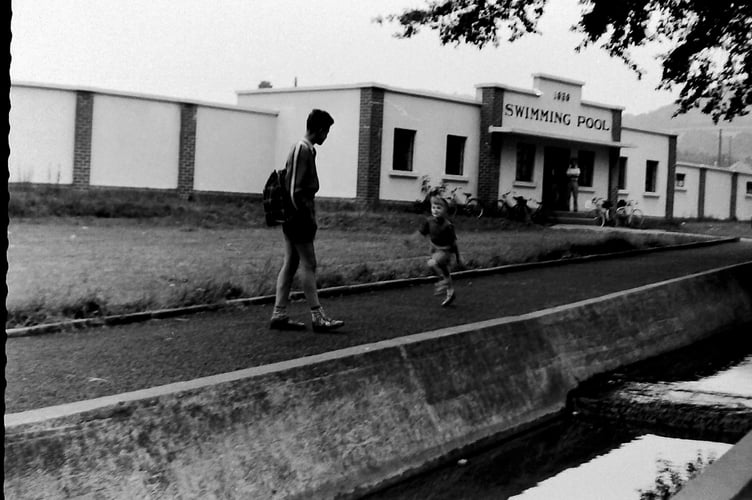
Mr Bailey was a hands-on type of guy and also insisted that no game, of any nature be allowed to be played in the park without the club first procuring the necessary licence from a person appointed by his good self.
Naturally, being a ludicrously rich landowner (some 12,248 acres in Wales alone) wasn’t without its perks and Bailey reserved the right to let the whole of the park out to anyone and at any time if he deemed it as beneficial to Abergavenny.
Mr Tucker pointed out just how advantageous this would be and for the benefit of any doubting Thomas he explained, “For instance, should Mr Bailey accept the post of president to the West of England Agricultural Club, he might say to them, ‘I have a nice ground suitable for your meeting. Come down into our part of the country and I will see the park at your disposal.’”
And there we have it - the job’s a good un!
Mr Johnson, who was responsible for the planning and design of Bailey Park, laid out his vision in the following terms.
“Along the side nearest the cattle market a stone wall will be built with an iron railing on the top of it, the remaining portion being enclosed by an ornamental fence of larch with the bark left on it. The principal entrance gates will be from the Hereford-road side, and will be composed of two ornamental gates hung from massive piers, with side gates for the entrance of foot passengers, the central entrance being sufficiently wide to accommodate a four-in-hand with ease. On the left hand, a lodge will be erected in the Gothic style. Shrubs will be planted inside the fences, and then a half-mile course will encircle the ground. Inside this will be a bicycle track, football, cricket, and other grounds, an ornamental pond, a grandstand and pavilion, a bandstand, and the necessary offices to make the park as complete as possible.”
And then to much applause, Mr Tucker added that a spot adjoining the Hereford Road side was earmarked by Mr Bailey as a site for a possible swimming bath.

Mr Bailey explained he had altered the plan to do away with the lawn tennis ground and said, “It would not do to mix up the lawn tennis with the football and cricket, and we already have lawn tennis courts at the castle which the tennis players could retain.”
It was reported that several members of the council nodded their heads sagely at this wise decision.
The so-called people’s park’ was scheduled to be ready for use by May 1, 1884 and the council agreed that “it will be a means of perpetuating the memory and transmitting the name of Mr Bailey to distant generations as one of the chief benefactors the town ever had.”
Of course, Crawshay still owned the park and called the shots regarding its use, the town was just leasing it, but a few years later that would all change.
After Mr Bailey’s shock death in 1887 at the age of 46, the park’s future was undecided. In 1894 a public meeting was held at the town hall to decide the question as to whether the town should purchase the freehold of Bailey Park, to secure it as a recreation ground. The board of commissioners agreed that had Mr Bailey lived it would have no doubt been his intention to present the park which he spent between £2,000 and £3,000 upon, to the people of Abergavenny.
As it stood, the initial 21 years’ lease had a little more than ten years before it expired and the land would revert to the trustees, which consisted of the Bailey family and associate partners.
The board agreed that for the town to be deprived of the use of the park would be a terrible thing, especially in light of all the money that had been spent on it.
The board approached the trustees and asked if they would carry out what they imagined was Mr Bailey’s original intention - to give the Park to the people without the people having to spend anything.
Fat chance!
The Trustees insisted upon a sum of £5,000, over £2,000 more than Mr Bailey had initially spent on the park ten years earlier.
Faster than you could say ‘philanthropic benefactor’ the trustees had almost doubled their investment.
It was a big ask for the Abergavenny ratepayers but the town’s council decided to do what everyone does when they want something they can’t afford - they got a loan!

The loan was from the Local Government Board and sanctioned for a lengthy period. The council was hopeful that the revenue generated by the park would be sufficient enough to pay it back without the ratepayers having to pay a single penny.
It was agreed that the park was to be maintained as a public space and the ratepayers were responsible for its upkeep, whether it paid or not.
Somewhat mysteriously, Alderman Mr Beveridge then asked the question, “Was there not some privilege to a certain hotel to sell intoxicants in the park?”
The chairman replied that Mr. Crawshay Bailey had a kindly feeling towards the proprietor of a certain hotel, and had accorded the privilege towards him during his occupation of the hotel, but the hotel was now in other hands and no such privilege existed now.”
Mr Beveridge then launched into a lengthy rant, about his two great objections regarding the park. He insisted that the public should only pay for its upkeep on two conditions. No drinking or betting was to be allowed.
Mr Beveridge then added, “I have had a great deal to do with young men in the last 16 or 18 years and I always find that sports connected with drink, which brings on betting, are the greatest evils that young men have to contend with.”
What Mr Beveridge would make of the abandoned beer bottles and used scratch cards that now litter the rolling greens of Bailey Park daily is anybody’s guess. But we digress. Let’s allow the man to finish.
“When we allow young men to drink and gamble without restraint or consideration, we lose them altogether. I could give names of young men lost altogether through these things. I know the majority of this meeting are against me but they ought to listen to me and ban any drinking or gambling on these grounds,” said Mr Beveridge.
Dr S H Steel added that he agreed with Mr Beveridge and that the park was a huge advantage to the town, not only for amusement but for the promotion of health.
He also thanked him for having the courage to speak his mind at a public meeting, even though his views were not popular.
The Rev S R Young also expressed his sympathy with Mr Beveridge and hoped the Park would be a blessing and not a curse to the town. He said he would do all he could to help keep the morals of the Park right.
And this ends the tale of how Bailey Park became an integral part of Abergavenny.
Of course, when talk turns to Bailey Park, sooner or later someone will get misty-eyed about the pool that used to lie there like a giant communal bath of chlorinated water.
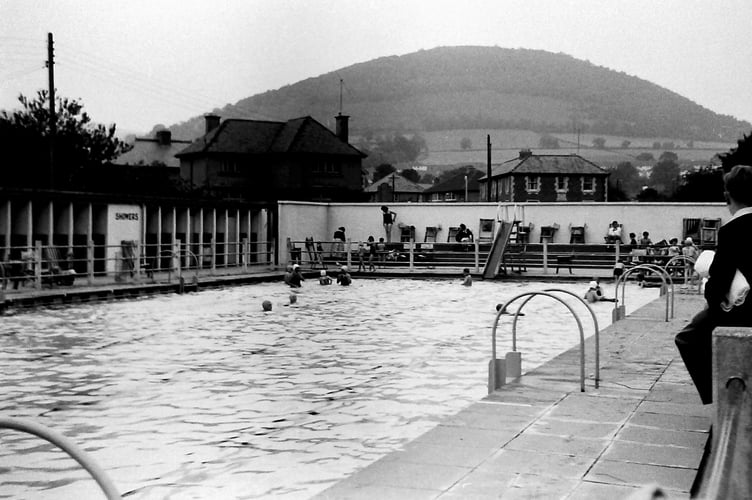
Interestingly, Swan Meadow was once considered a possible site for an outdoor swimming pool, before the town council opted for Bailey Park. The pool was built for the princely sum of £6,500.
Sadly, the pool closed its doors for the last time in 1996 due to health and safety issues and a lack of funding.
In April 2006, Monmouthshire County Council decided to fill in the main pool and the adjoining learner pool for fears of vandalism.
The pool was 44 yards long by 14 yards wide, was over eight feet deep and held 162,000 gallons of water. It was opened by Mayor W. Rosser in April 1940 but is now all dried up. Only grass remains and one or two of the original walls, which still stand in mute testimony to Abergavenny’s aquatic adventures.
Finally, we couldn’t end without mentioning a special event that occurred in Bailey Park on May 17, 1910. The honorary secretary of the Abergavenny Amateur Athletic Association, Mr Zachariah Wheatley, had arranged for Captain Clayton of Mansfield Notts to give a demonstration of the largest sport - aviation!
Unfortunately, Capt. Clayton was injured the previous Saturday when his Bleriot monoplane crashed 30 feet from the ground. Determined to not let the people of Abergavenny down, Clayton arranged for Mr. J. Radley of Bedford to take to the skies over Bailey Park in his stead.
Before taking off, Radley told the Chronicle, “No man knows what an utter fool feels like until he has risen in the air on a monoplane. The feeling of utter helplessness and the knowledge that the slightest error on his part would be met with the derisive shouts of the multitude below or perhaps hurl him to destruction is a sobering thought indeed.”
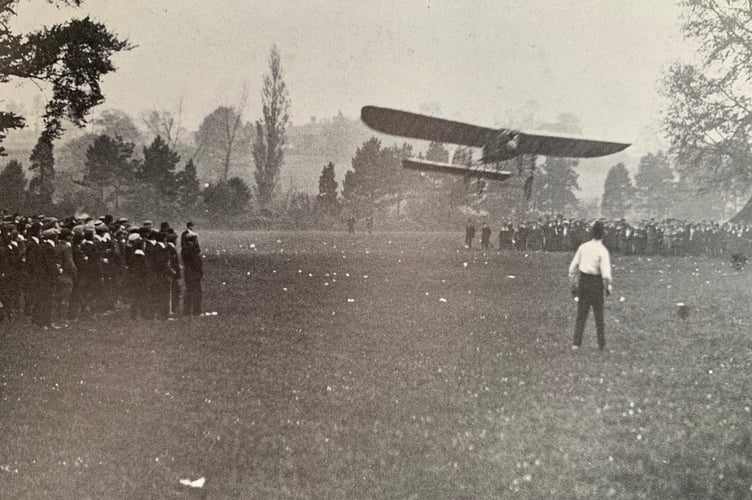
Not to be dissuaded by the agonies of idle contemplation, the magnificent man got into his magnificent flying machine at approximately 4.15 pm and set the controls to the heart of the sun.
Taking off from the town end of the park, the propeller spun like a noisy Catherine wheel and after a run of about 80 yards, rose to the height of about 30 feet much to the cheers and delight of the 6,000 people present. Up, up and away!
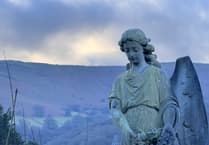
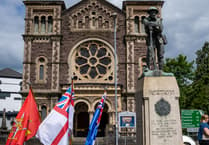
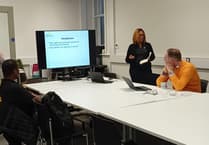
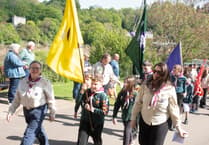
Comments
This article has no comments yet. Be the first to leave a comment.